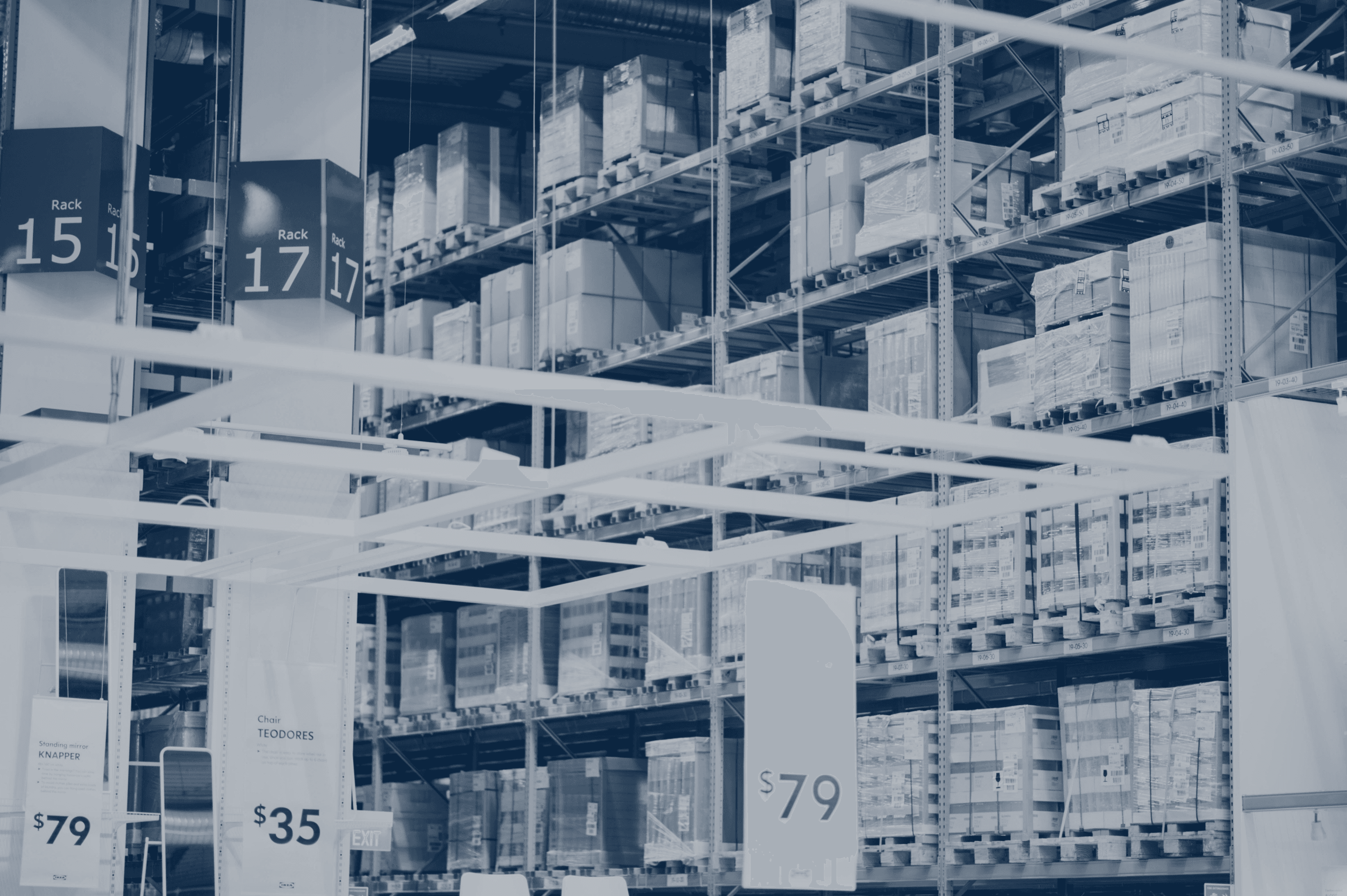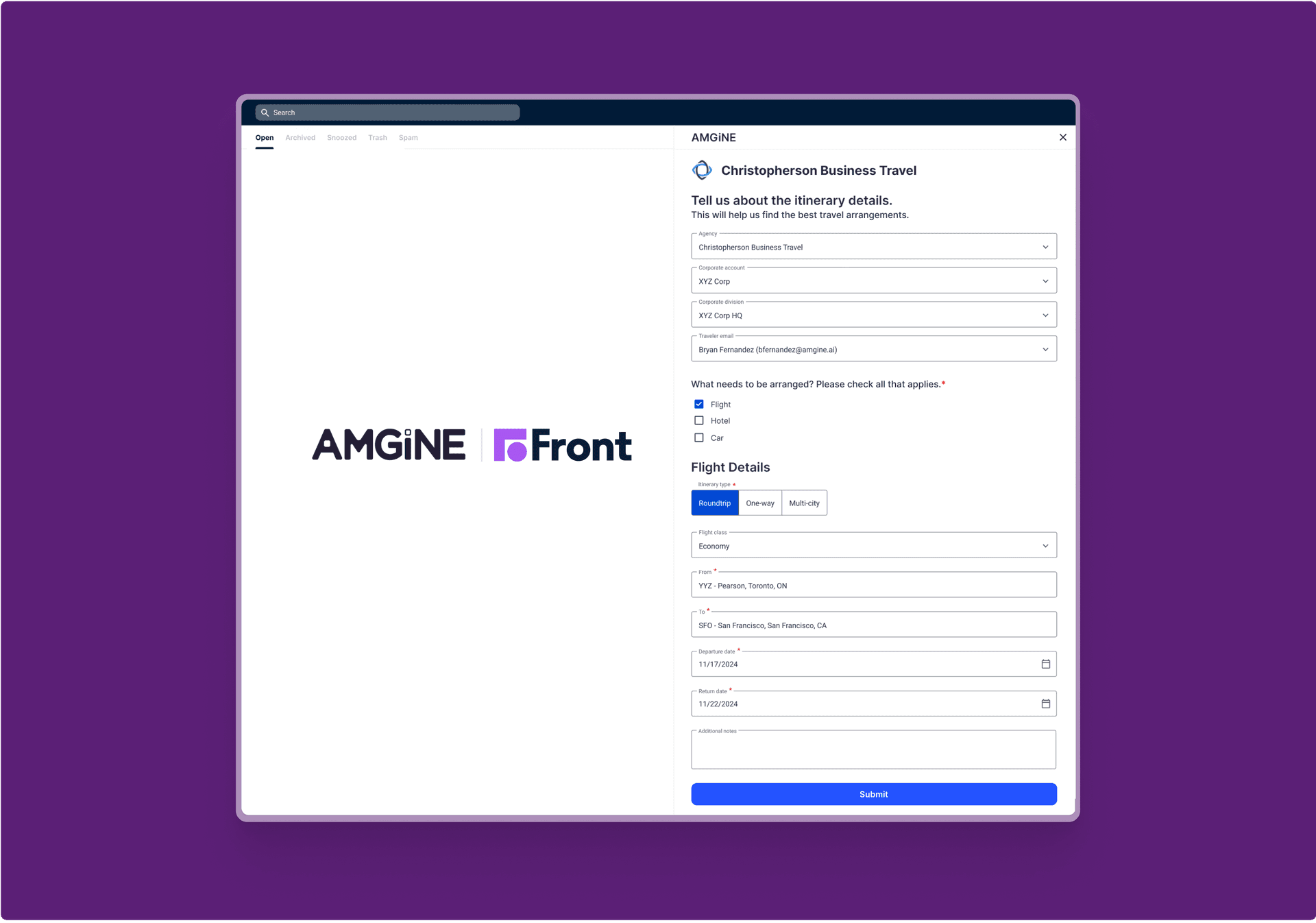Making software decisions can be tricky. Tech stacks are more robust and complex than ever before, and choosing the right logistics software for your business needs can be a daunting task.
Not only are there countless tools, but each one seems to offer unique features and capabilities, making it even harder to know what fits your business needs best.
And yet, its a decision logistics companies need to make. The right software can offer businesses a ton of opportunity in reducing costs and improving customer service. Perhaps even more importantly, the wrong solution can lead to wasted time and resources.
So, how do you make the best choice? It all comes down to understanding your business’s unique logistics needs and evaluating the available software solutions by how well they match up.
In this article, we’ll share key factors to consider when choosing the right logistics software. We’ll explore common challenges businesses face when implementing new apps and tools, then provide tips for overcoming them. Let’s get started 🙌
What is logistics software?
Logistics software, including supply chain management software, streamlines and optimizes the complex operations that keep supply chains buzzing. Some operations include transportation management, warehouse management, inventory management, order processing, and as you know many, many more.
Logistics service providers count on logistics software to help manage their customer’s supply chain more efficiently, reduce costs, improve customer service, and increase profitability. The right logistics software acts as a centralized platform that helps 3PLs track their inventory, shipments, and deliveries, while also giving customers visibility into their supply chain to make even more informed decisions. One place for everything = less confusion and better teamwork 🤝
Logistics software can be tailored to specific needs of a business, making it customizable and adaptable to evolving needs. For example, a transportation management system (TMS) can help businesses optimize their delivery routes, reduce fuel consumption, and track shipments in real time, while a warehouse management system (WMS) can help businesses manage inventory levels, optimize warehouse layouts, and reduce order processing times. Communication software for logistics companies can reduce email volume, automate manual tasks and message routing, and accelerate collaboration.
Staying competitive in this increasingly complex business environment is not easy, but the right software can help. By automating and streamlining logistics operations, businesses can focus on other areas of their team, like product development, sales, and customer service. When there’s more headspace for bigger-ticket items, teams can move the needle on more important goals.
What is logistics management?
Logistics management is the process of planning, implementing, and controlling the movement and storage of goods and services from the point of origin to the point of consumption. The goal of logistics management is to optimize the supply chain and ensure that products are delivered to customers in a timely and cost-effective manner.
Logistics management feels a lot like spinning tons of plates like transportation management, inventory management, warehousing, order processing, and customer service without letting any drop. 🤹
When everything is operating as it should, products are delivered to customers on time and in the most efficient way possible.
Effective logistics management takes careful planning and attention to detail. Team managers balance the needs of the business with the needs of the customer, while also managing the cost of all logistics operations.
By consistently optimizing the supply chain and making sure every product gets delivered on time, logistics service providers (LSPs) enable businesses to improve customer satisfaction, reduce costs, and increase profitability. That’s why logistics management is an area of increasing focus for LSPs looking to stay competitive and outpace others in this fast-moving market.
Logistics management software
With so many different types of logistics software options available, it’s important to spend time choosing the right solution to meet your needs. Each of these software solutions has its own unique features and capabilities, and businesses should evaluate their options carefully to find one that operates best for them.
Types of logistics software
Logistics software comes in a variety of forms, each designed to address specific needs within the supply chain. Understanding the different types of logistics software available can help businesses choose the right solution to optimize their logistics operations.
Here are some of the most common types of logistics software:
Communication software
Communication software enables businesses to collaborate internally and with customers efficiently and effectively, helping keep all interactions fast and accurate. Many businesses use traditional email with shared inboxes like Outlook and Microsoft. Slack and Microsoft Teams are used for internal messaging. Zendesk is a help desk software that empowers customer service teams to provide better support. Front is an example of next-gen communication software a shared inbox platform with built-in collaboration that helps logistics companies streamline operations with workflows and message routing.
Order Management System (OMS)
An Order Management System (OMS) helps businesses manage their order processing operations. It allows businesses to track customer orders, manage inventory levels, and automate order fulfillment processes, providing real-time visibility into order processing operations.
Transportation Management System (TMS)
A Transportation Management System (TMS) helps businesses optimize their transportation operations managing freight movements, tracking shipments, and automating transportation processes.
Warehouse Management System (WMS)
A Warehouse Management System (WMS) helps businesses manage their inventory and warehouse operations, tracking inventory levels, managing stock movements, and optimizing warehouse space.

Supply Chain Management System (SCM)
A Supply Chain Management System (SCM) helps businesses manage their entire supply chain, from sourcing to delivery. It allows businesses to optimize their supply chain operations, streamline processes, and reduce costs.
Supply chain technologies
Supply chain management encompasses two main components: supply chain management (SCM) and supply chain execution (SCE). Supply chain management involves the planning and coordination of all activities involved in the sourcing, production, and delivery of goods and services. Supply chain execution involves the physical movement and storage of goods and services.
Freight Management System (FMS)
A Freight Management System (FMS) is a software solution that helps businesses manage their freight operations, including carrier relationships, freight movements, and freight costs.
Benefits of logistics software
Here are some of the key benefits above technologies can offer:
Enhanced visibility 👀
By providing real-time tracking and monitoring of shipments, logistics software allows businesses to stay informed about the status of their orders and shipments. This visibility can help businesses identify potential issues and take proactive steps to address them before they balloon into bigger problems.
Cost savings 💰
Logistics software can help businesses reduce costs by optimizing transportation routes, improving inventory management, and reducing the need for manual labor. By automating many aspects of the logistics process, businesses can reduce the risk of errors and minimize the cost of handling logistics operations.
Improved accuracy 📈
Automating many of the manual processes involved in logistics operations can improve accuracy. Logistics software can improve order accuracy, reduce the risk of shipping errors, and improve inventory management.
Increased efficiency 💯
By streamlining processes and reducing the need for manual labor, the right software can help businesses increase productivity and reduce the time it takes to complete tasks and projects.
Improved customer service 🤝
Real-time visibility into order status and shipment tracking means better customer service. By keeping customers informed about the status of their orders, businesses improve customer satisfaction and build customer loyalty.

Choosing the right logistics software
How to pick which one is best for your teams needs? While the service you offer (e.g. warehousing, transportation, etc.) will determine the type of software you need, picking the best option for your team’s needs can be tough. Here are some key factors to consider when selecting logistics software:
Analyze your unique needs
Every company has a different history and set of challenges. Identify the specific pain points in your logistics operations and determine the key features and capabilities you need from logistics software to address them.
Select a scalable solution
As your business grows, your logistics operations will also grow and evolve. Choose a solution that can scale with your team. Look for something that can accommodate your current needs while also providing room for growth and expansion.
User-friendly interface
A user-friendly interface can help streamline operations and reduce the time and effort required to complete tasks. Look for software that has an intuitive interface and requires minimal training for users to get up and running.
Customization options
Every business has unique logistics needs and requirements, and customization options allow for meeting specific needs.
Vendor support and reliability
Look for vendors with a proven track record of providing high-quality software and excellent customer support. Consider the vendor’s reputation, customer reviews, and response times. Selecting the right logistics software requires a careful evaluation of your needs, consideration of scalability and customization options, and evaluation of vendor support and reliability.
Deep dive: communication software
Communication software is an up and coming sector of logistics software, so we wanted to dive deeper into its capabilities and output for logistics companies.
Communication has always been a challenge in the transportation and logistics industry. High email volume, unclear task ownership, lack of access to information, and bumpy handoffs reduce operational efficiency and hurt the customer experience. Customer service expectations are only rising a recent study found 39% of customers surveyed said they will not do business with any company that fails to offer a personalized experience. The Amazon Effect refers to a standard of customer service created by Amazon that demands businesses hit a new level of delivery speed and has forced many companies to rethink their strategies.
How communication software addresses common challenges
How can 3PLs reduce email volume, increase operational efficiency, and improve their customer and partner relationships? It starts with creating a better communication workflow with the right software.
Typically, logistics companies rely on email distribution lists or a shared inbox to make sure teams have visibility into the right messages. This process quickly becomes a nightmare to manage due to high email volume, many people receiving the same email, and internal forwarding. Ultimately, traditional email tools like Outlook and Gmail end up costing logistics companies revenue.
Logistics and transportation companies need a better solution for communicating with customers and partners. That’s where communication software comes in.
Front: the one-stop shop solution
3PLs rely on communication software platforms like Front to streamline their communication workflow across the entire business. With Front, they can increase accountability, reply to critical messages faster, and make every customer feel like their only customer. Companies like MNX, Echo, and Estes Forwarding Worldwide use Front to fuel business growth, manage high email volume with ease, and improve internal collaboration.
Being able to ensure quality customer service at scale is the biggest differentiator in the logistics industry. Communication software for logistics companies enables 3PLs to deliver fast and accurate service at scale. Work more efficiently, increase customer satisfaction, and improve all-around communication.
Time is money, especially for LSPs. Front streamlines your communication workflow and gives you time back.
The future of logistics software
There are many key trends shaping the future of logistics software, including:
Integration with new kinds of artificial intelligence 🪄
AI can be used to optimize transportation routes, predict demand, and reduce the risk of shipping errors. As AI technology continues to advance, logistics software will become even more intelligent and capable of making real-time decisions based on data and insights.
Just recently, we announced an integration of AI into our own product, using ChatGPT’s API. Its an early access program for new AI capabilities within Front that enable faster, smarter, and more productive work and relationships.
New AI capabilities within Front composer enable users to instantly draft messages using context from an ongoing conversation or just a few bullet points. We also introduced the ability to summarize a Front conversation with one click, providing an AI-generated summary that includes a customer happiness score and even a recommendation for the best next step.
Want to give AI a try? The waitlist is open here.
Increased automation 🤖
Robotics, autonomous vehicles, and drones are already being used in logistics operations, and their use is expected to increase in the coming years. Logistics software will play a critical role in managing these automated systems, ensuring that they work seamlessly with existing logistics processes.
Front’s platform leverages automation, giving logistics teams the ability to replace manual busywork. Assign, escalate, or reply to messages based on parameters and rules that you define. For example, if one of your team members is responsible for a specific customer, you can set up a rule that assigns them as the owner of every email from that customer. That way, they can deliver a consistent customer experience while building a relationship with the customer.
Automation gives teams the ability to eliminate duplicate work and increases productivity. Logistics companies like Sennder, Shaker Logistics, and CLX Logistics utilize a combination of email tagging and automation rules to route emails to the correct team members based on client or keywords. This ensures every message is handled on time.
Additionally, some 3PLs create rules that depend on where a request originated. If it comes from a company based in Chicago, it will be routed to the Chicago pod inbox. Finally, you can set rules that tag emails from VIP clients so they stand out. You can even get a reminder if they have gone a certain amount of time without a reply.
By capitalizing on these trends, businesses will be able to optimize their supply chain, reduce costs, and improve their logistics operations.
Of course, implementing a new logistics software into your current business processes is easier said than done. It requires diligent effort across the team to get the technology up and running, and often, it’s recommended that you designate someone on your team as the champion to implement it well. However, it’s well worth the work the right logistics software for your business can help you scale and reach your goals faster by making it easier on your team to collaborate and get work done.
Ready to take Front for a test run?
Written by Front Team
Originally Published: 7 April 2023










